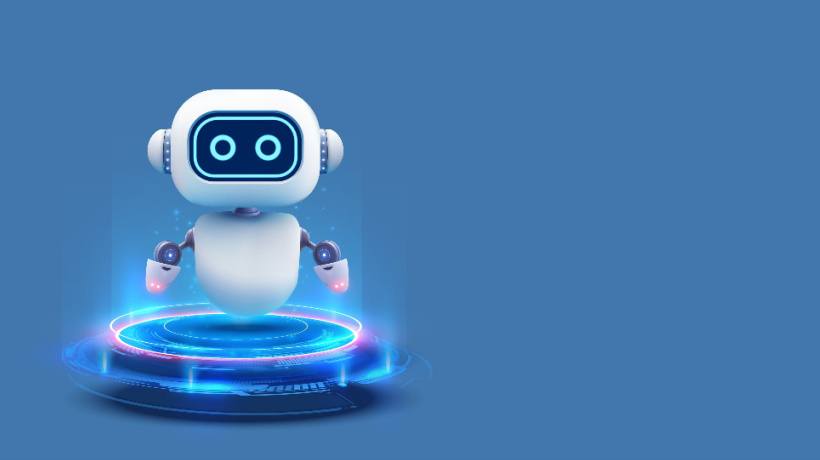How I Went from Higher Ed to Software Business Analyst in 1 Year

Learning to code so that you can land a job in tech can feel daunting. That’s why we’re sharing inspiring stories from Codecademy’s community — to show how people like you (yes, you!) can embark on a learning journey and end up with a totally new career. We hope these stories serve as a reminder that there’s no single path to a more fulfilling work life.
Today’s story is from Stina Nieman, a 31-year-old Software Business Analyst at Wayside Publishing, living in South Central Pennsylvania. Read more stories from Codecademy learners here — and be sure to share your story here.
Why I chose to learn to code
“I started out my career in higher education and then fell in love with tech and coding during the pandemic because I wanted to learn something new and useful.
I started with the basic skill path Code Foundations, and really just had fun. I found exactly what I was looking for. I then also dabbled into Python, SQL, and HTML. I learned command line, GitHub, and basic HTML, and those skills helped me stand out in the job interview for an entry-level tech operations role about a year after I started learning how to code.”
Learn something new for free
How I made time to learn
“During the pandemic, I found myself with some free time on my hands, and since I love to learn, I thought about what I could explore. Instead of, you know, solving a difficult puzzle or mind game, I considered what I could learn that might also result in career opportunities or potentially lead to making more money in the future.
I looked at a couple of websites, but Codecademy stood out as the most fun, playful, and colorful platform. I really enjoyed the goofy and playful approach to learning. I developed a habit of dedicating 30 minutes to an hour every morning before work to learning — this became my morning routine.”
How I saved thousands of dollars
“With not that much money, especially when compared to bootcamps, I was able to learn so much. Codecademy is a steal compared to a bootcamp! Codecademy offered a discounted version for 130 bucks a year, and I am very grateful that I could learn from home at my own pace with such fun and engaging material.”
How long it took me to land a job
“I started learning in December 2020 and I started my first ed tech job in September 2021. It was an entry-level operations role where I learned new technical skills every week.”
How I got in the door
“After experiencing a round of layoffs at the ed tech company, I found myself with some extra time on my hands. Wanting to make the most of that time, I invested in a Codecademy Pro subscription. I completed both the Computer Science career path and the Business Intelligence Data Analyst career path. I learned a lot about computers in general, as well as Python, data analysis, and SQL.
SQL, in fact, turned out to be one of the requirements for the business analyst position. I came across the job posting on LinkedIn. By the time I applied, I had built a robust portfolio of projects through the Codecademy career paths, and I had a tech resume. I think I came across as a rather technical person with an education background.”
It’s not about reaching a certain point where you become a qualified programmer; there’s no such final step. It’s an ongoing learning journey.
Stina Nieman
Software Business Analyst at Wayside Publishing
How I nailed the interview
“Without any prior networking connections, I was invited for a phone interview with HR and then a live interview with a team of five people. This job required five years of experience, and I’ve had five years of job experience, but certainly not business analyst experience. So, I think that not just my job experience but also what I’ve learned on my own time has helped.
I really think that this is the biggest piece of advice that I would have for other coders: You don’t have to learn a ton or an entire language or become fluent in anything. Just a couple of little nuggets that help you stand out in an interview can sometimes make the difference. Even if you only learn some basics of how the tech world works. I could speak to basic HTML. I know how to do a Git commit on the command line. I know what a GitHub repository is, and I understand the difference between the main branch and a feature branch. Those small basics, I think, really helped me stand out.”
How I evaluated the offer
“During the [interview] process, I expressed my passion for coding in Python and my love for data analysis. I mentioned my wide range of interests and asked whether these could be pursued in the long term. They responded by saying, ‘We’re a rapidly growing company with diverse needs in the future, and you can take your career with us wherever you would like.’ This became a significant deciding factor for me to choose them. While I enjoy my current role as a business analyst, I appreciate the idea of keeping my options open for something more technical down the road, and it seemed like they were supportive of that.
The salary offered was better than my previous job, so that was a big factor. Also, I was able to do good with tech and make the learning experience for middle and high schoolers more effective, fun, and accessible. That was a driving force for me.”
How day one and beyond went
“The first couple of days were, of course, very exciting because I finally got to work in JIRA with all the development tickets, QA tickets, and grooming tasks. It was a lot to get used to initially, but now I’m knee-deep in grooming requirements, the backlog, and epics for both the front end and the back end. I’m actively collaborating with QA engineers, so I feel like I’m truly immersed in the software engineering and development side of the company I’m working for.”
What are “grooming tasks”?
This is a term used in Agile development. While the exact definition may vary from team to team, backlog grooming is the process of regularly updating the backlog and preparing for future sprints.
What I wish I knew before I started learning
“It’s less about knowing a specific library or certain details. Of course, it’s good to grasp object-oriented programming and some basics, but what truly matters is having a learner’s mindset. Maintaining a mindset of curiosity, a constant desire to learn, and an eagerness to improve is the basis for success.
I used to think there would be a point where I’d become a coder or a tech-y person, but the point of programming is that you’re always learning; you’re always asking questions and trying to find the answer. Things are always changing so you have to be comfortable with being a learner forever. It’s not about reaching a certain point where you become a qualified programmer; there’s no such final step. It’s an ongoing learning journey.”
Not sure where to start? Check out our personality quiz! We’ll help you find the best programming language to learn based on your strengths and interests.
Want to share your Codecademy learner story? Drop us a line here. And don’t forget to join the discussions in our community.


